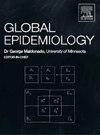Comparison of access to stroke diagnostics, treatment, rehabilitation, and outcome between men and women
引用次数: 0
Abstract
Background
We aimed to compare access to diagnostics, treatment, rehabilitation, and outcome in women and men with stroke.
Methods
In this observational study we used routinely-collected, aggregate health data from all patients admitted with a stroke in the Capital Region and Region Zealand, Denmark from May 2016 until October 2022.
Results
Among 28,855 stroke patients (55 % men, 45 % women), women were older (53 % women vs. 47 % men with age > 75 years). Overall, women had reduced access to: magnetic resonance imaging (MRI; 40 % vs. 43 %, CI 95 %: 1.06–1.16), computer tomography (CT)-angiography (25 % vs. 28 %, CI95%: 1.07–1.19), carotid ultrasound (48 % vs. 52 %, CI95%: 1.12–1.23), thrombolysis (16 % vs. 18 %, CI95%: 1.13–1.28), and neuropsychological assessment (9 % vs. 16 %, CI95%: 1.70–1.97). Home discharge rates were lower for women (45 % vs. 47 %, CI95%: 1.04–1.15), while in-hospital mortality was higher (8 % vs. 6 %, CI95%: 0.59–0.71). For patients >75 years, women had less access to MRI (34 % vs. 35 %, CI95%: 1–1.16), carotid ultrasound (46 % vs. 51 %, CI95%: 1.13–1.30), thrombolysis (15 % vs. 16 %, CI95%: 1.02–1.24), and neuropsychological assessment (2 % vs. 4 %, CI95%: 1.60–2.42). Women's in-hospital mortality remained higher also in patients >75 years (12 % vs. 8 %, CI95%: 0.62–0.79).
Conclusions
Women had reduced access to testing, treatment, and rehabilitation across all age groups and stroke types. This disparity was most notable in interventions not included in the national quality assessment program.
男性和女性卒中诊断、治疗、康复和预后的比较
背景:我们的目的是比较女性和男性卒中患者的诊断、治疗、康复和预后。在这项观察性研究中,我们使用了2016年5月至2022年10月期间丹麦首都地区和新西兰地区所有卒中患者的常规收集的汇总健康数据。结果28,855例脑卒中患者(男性55%,女性45%)中,女性年龄较大(女性53%,男性47%);75年)。总体而言,女性接受磁共振成像(MRI)的机会减少;40%对43%,CI95%: 1.06-1.16),计算机断层扫描(CT)-血管造影(25%对28%,CI95%: 1.07-1.19),颈动脉超声(48%对52%,CI95%: 1.12-1.23),溶栓(16%对18%,CI95%: 1.13-1.28)和神经心理评估(9%对16%,CI95%: 1.70-1.97)。妇女的出院率较低(45%对47%,CI95%: 1.04-1.15),而住院死亡率较高(8%对6%,CI95%: 0.59-0.71)。对于75岁的患者,女性较少接受MRI(34%对35%,CI95%: 1-1.16)、颈动脉超声(46%对51%,CI95%: 1.13-1.30)、溶栓(15%对16%,CI95%: 1.02-1.24)和神经心理评估(2%对4%,CI95%: 1.60-2.42)。75岁患者的妇女住院死亡率也较高(12%比8%,CI95%: 0.62-0.79)。结论:在所有年龄组和卒中类型中,女性获得检测、治疗和康复的机会减少。这种差异在未纳入国家质量评估计划的干预措施中最为明显。
本文章由计算机程序翻译,如有差异,请以英文原文为准。
求助全文
约1分钟内获得全文
求助全文

 求助内容:
求助内容: 应助结果提醒方式:
应助结果提醒方式:


